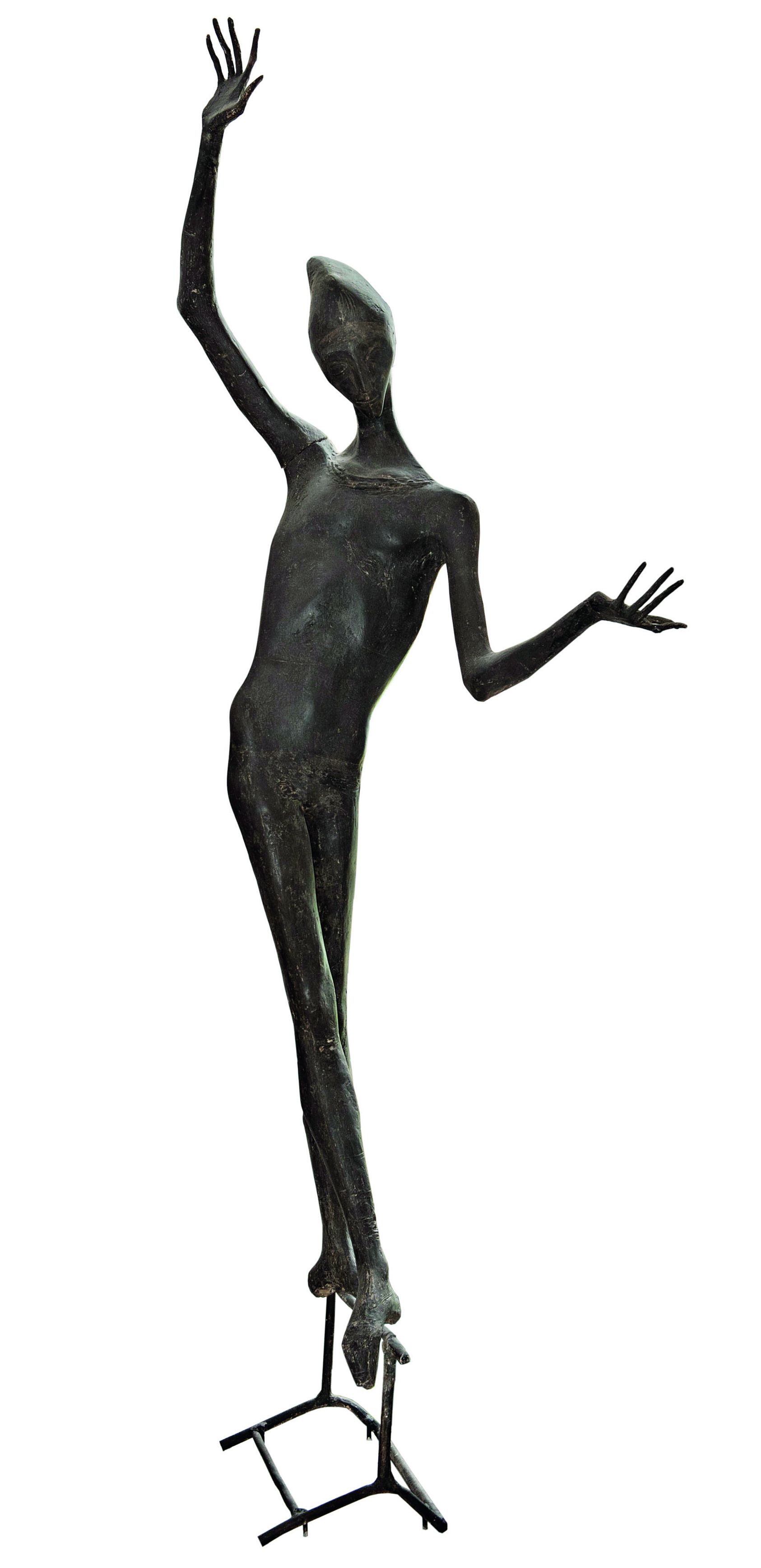Galin Malakchiev was born in the family of a cavalry royal officer from Ruse, a circumstance that caused the talented sculptor troubles after the imposing of the communist power. Galin Malakchiev worked as an oxygen-welder at the construction of the St. St. Cyril and Methodius National Library. While doing his military service as a labour service man, he began his studies in architecture. Allowed to enrol in the "N. Pavlovich" Higher Institute of Fine Arts, G. Malakchiev studied one year but repeated it in order to be in Lyubomir Dalchev's class. In 1961, he graduated in sculpture in Dalchev's class.
He created easel and monumental sculptures and established himself as a vanguard sculptor breaking the dogma of the ideological plastic arts typical of that time – heroes with clenched fists carrying flying flags.
In 1964, the sculpture "Harlequin" was part of the National Exhibition of Sculpture and Graphics by the name of "Circus Artist". The rejection of firmness, the hyperbolic elegancy, the delicacy of the figure and its unstable stability all aim at reflection. However, exactly because of this, the sculpture was not only disputed by art critics such as Dimitar Ostoich, Spas Gergov, Veneta Ivanova and Ivan Funev but the author was accused of "formalism", "decorative end in itself" and "subjectivism". The first independent exhibition of Galin Malakchiev was in 1966 but it was closed in just four days. The artist refused to compromise and chose the way of internal emigration.
Accused of "decadence", "abstractionism" and "imitation", Malakchiev left the capital and in 1973 settled together with his wife Tsvetana in the village of Batuliya, near the town of Svoge. There he created some of his most famous works of art but his restricted financial resources limited him to only small sculptures.
In 1982, Malakchiev had an independent exhibition in the building of the UBA. It won him the first prize in easel plastic arts in the name of Marko Markov.
After 1989, there were several exhibitions dedicated to Galin Malakchiev: in 2001 at the Rayko Aleksiev Gallery, in 2009 at the National Gallery and the last one in 2011 at the Sredets Gallery. None of them was accompanied by a study on his creative work. The sculpture "Harlequin", included in the exhibition "Forms of Resistance", is evaluated as "the first total artistic resistance against the socialist realism in sculpture, a revolt not only against its plastic stereotypes but against its nature – the attempt at replacing the divine. [...] The spiritual essence of this creature is completely different; it doesn't feed on Marxist ideology, on party slogans which give birth to cast-iron and granite heroes. Its origins should be found in the divine breath." (Iliev 2016: 141)
So far, there is no monograph published on Galin Malakchiev's work.

